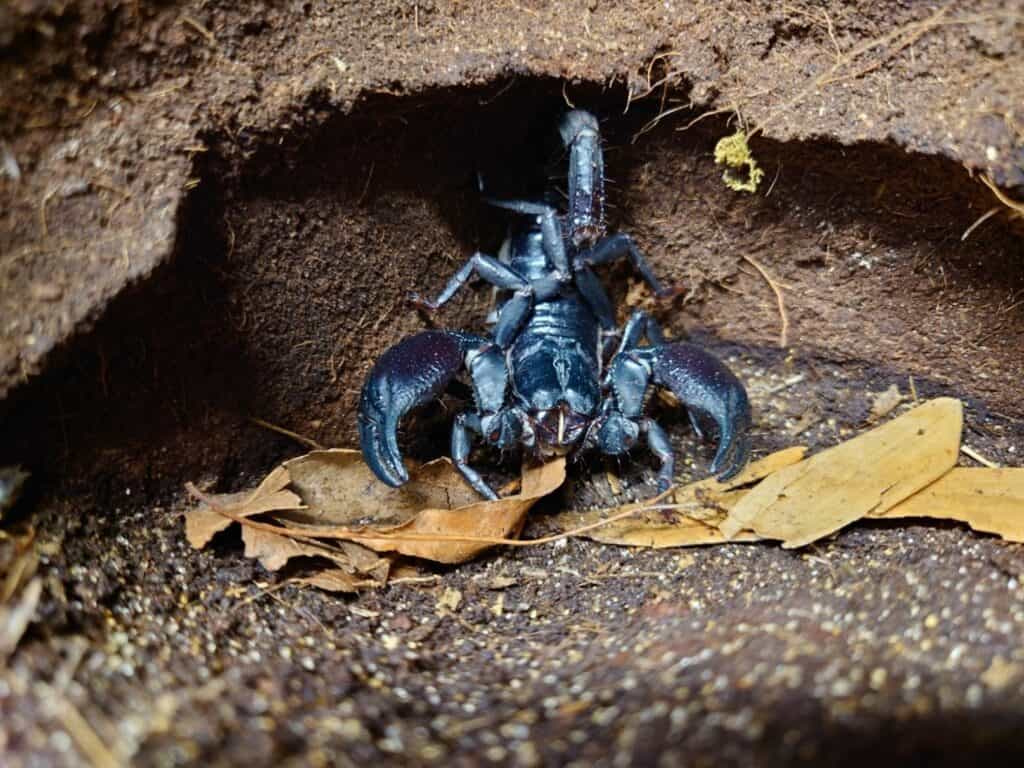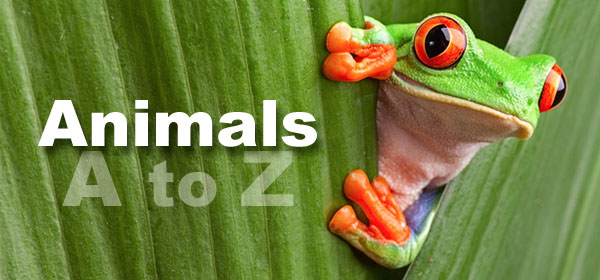Ever wondered what it is like to be a part of the reptile and invertebrate team here at Wingham? Keep reading to see what the team get up to during their day to ensure that everything runs smoothly.
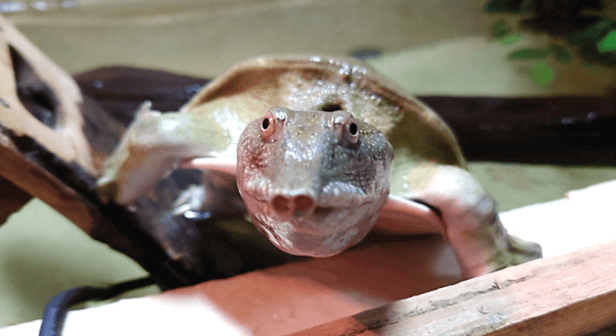
Our day usually starts with three keepers. In the morning, one person is responsible for everyone that lives inside the reptile house, one person gets to hang out with our critically endangered frogs and the tortoises, and one person spends their day with the bugs.
The first thing we do when we come into work is check that everyone is where they should be. The most important thing about being a zookeeper is keeping our animals safe and happy inside their enclosures. So, making sure that they are still there and in good health is our top priority.
The majority of the morning is filled with changing everyone’s water bowls, ensuring they have fresh, clean drinking water to get them through the day, removing food bowls and recording the temperatures and humidity in all of the enclosures. Some of our animals also get misted daily to keep their humidity up.
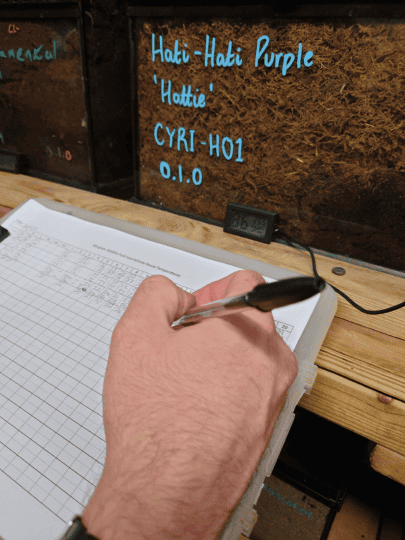
We record temperatures and humidities in our reptile and bug houses daily.
Once the tortoise person is back in the reptile house, it is their job to prepare all of the veggie diets for the day, which include food for the tortoises, iguanas, skinks, turtles, geckos and fish. The person working in the bug house also prepares veggies, usually for the cockroaches, slugs, snails, millipedes and isopods. We make sure to use a variety of foods and everyone gets a specific amount weighed out for them.
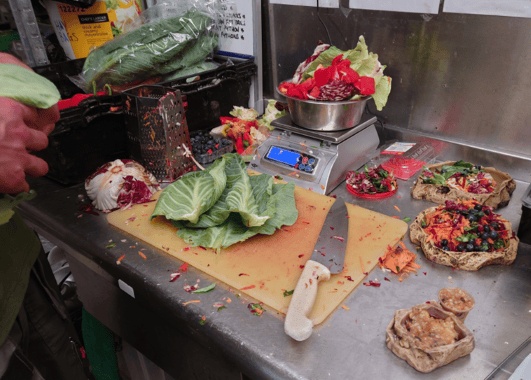
The diets for our reptiles and bugs includes a variety of vegetables and fruits.
After the morning rounds have been completed our keepers go for their breaks to have a quick rest and a snack before continuing with their day.
Next, the keepers get stuck in with some cleaning. Luckily, reptiles and invertebrates don’t make as much mess as other animals, such as mammals, so cleaning up after them daily isn’t a huge chore. We just remove any poo, scrub dirty sticks, check their substrate is all clean and that’s the job done. However, on specific days of the week our keepers do deeper cleans, involving cleaning all of the plants, the insides of the glass, dusting fixtures and fittings, water changes in our aquatic tanks and completely removing and replacing substrates. These big cleans keep our team busy for a large part of the day.
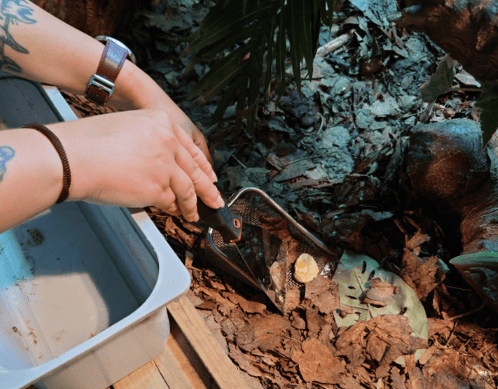
Part of our daily cleans involves removing poo and urate from the enclosures.
Once everyone is clean, the veggies prepared earlier and any live food is dished out to all that need feeding on that specific day. Bramble is collected from around the zoo to feed our stick insects and we forage for plants and flowers to offer to our leaf-cutter ants. Once a week, our snakes and crocodiles are offered their food too. Our feeding lists vary daily as many of our reptiles and invertebrates do not need to eat daily.
The keeper working in the bug house then gets the pleasure of changing over 200 tarantula water bowls (no, that isn’t a typo – two hundred).
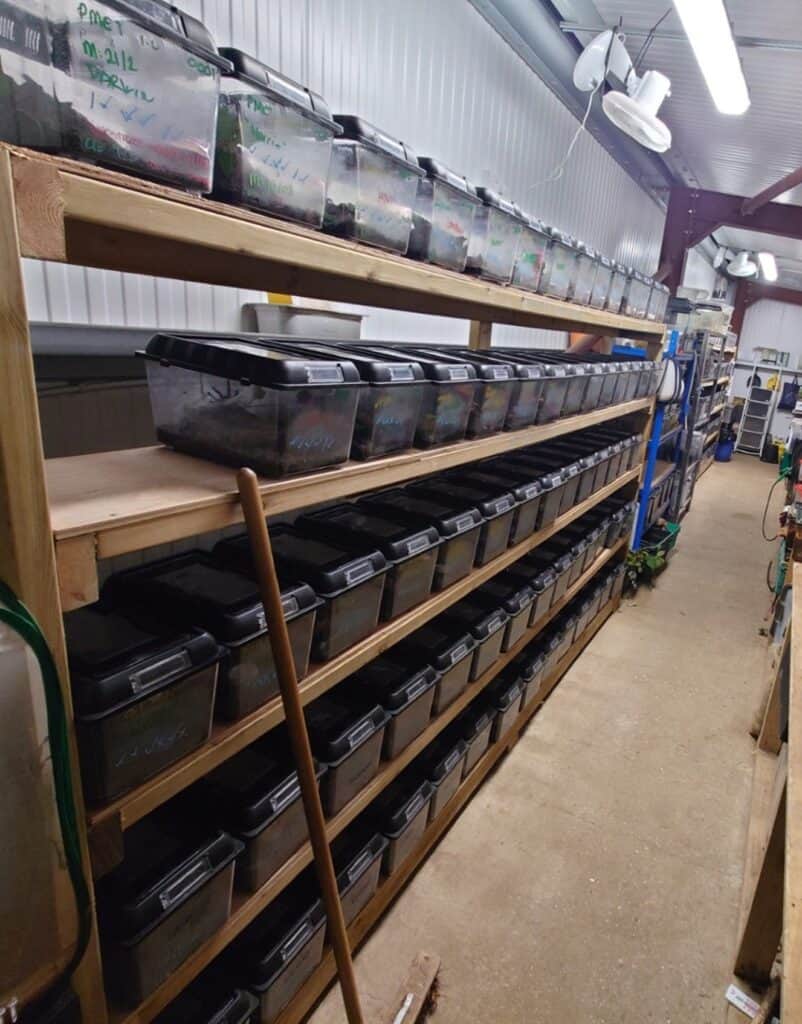
All of the shelving along the back wall of the Invertebrate House (this is not on-show to our visitors) houses our tarantulas – Beth talks more about our tarantulas here: Introducing WWP’s Gooty Ornamental Tarantulas
Usually, after all the reptiles, amphibians and invertebrates have been cleaned and fed, the keepers take themselves off to grab a bite to eat too.
The afternoon is when the keepers get stuck into providing our animals with enrichment. Any food enrichment is taken from their diets and is often set aside earlier in the day. Our reptiles and amphibians are provided with natural enrichment, rather than plastic toys or feeders, so get things like scatter feeds, food in bamboo tubes, piles of leaves, sticks that smell of other animals from around the zoo, animal hair, etc. Our invertebrates get a mixture but will get given natural things more often and mostly respond to food enrichment.
Enrichment Favourites:
- Piles of Leaves – enjoyed by our snakes, lizards, crocodiles, cockroaches, millipedes and scorpions.
- Bird Feathers – enjoyed by our snakes, monitor lizard, cockroaches and isopods.
- Novel Foods (foods that the animal can eat but aren’t part of their main diet) – enjoyed by our turtles, lizards, crabs, cockroaches and millipedes.
- Rearranging Enclosures – enjoyed by pretty much everyone!
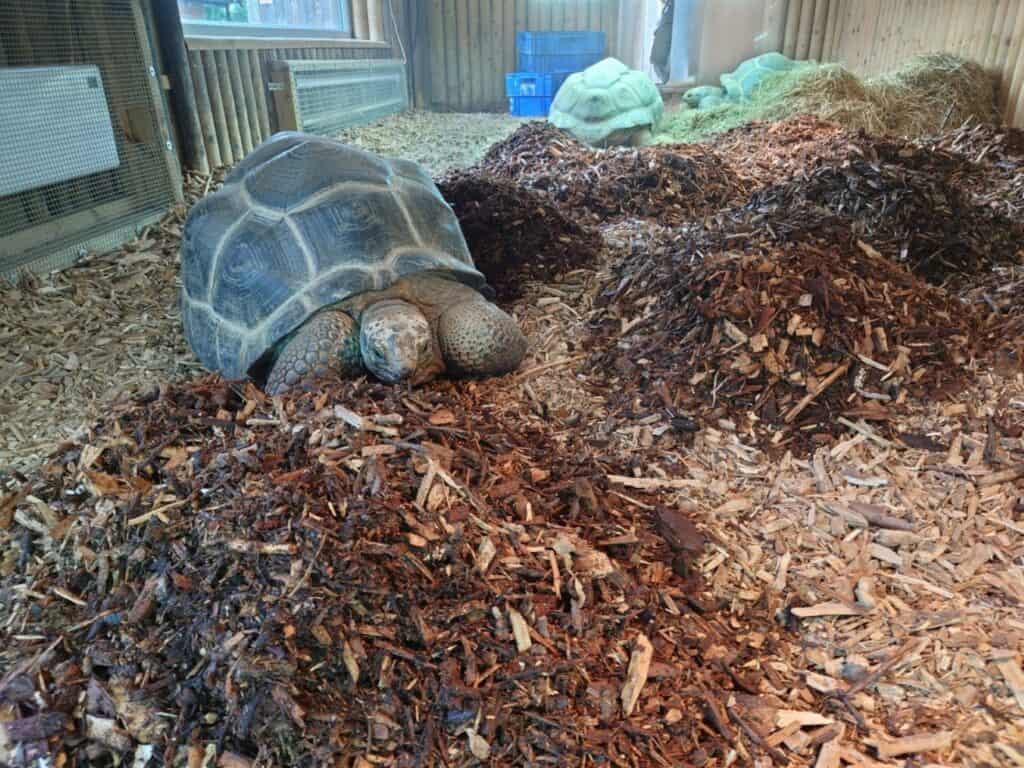
Our tortoises with piles of new woodchip to climb on and interact with.
The end of our day on the reptiles and invertebrates team involves mostly boring jobs. We change bins, clean windows, do paperwork, tackle some extra jobs such as sweeping the floors or dusting and tidying our areas ready for the next day. But it is also the time of day that our animals get their last misting of the day and the crayfish get their dinner. In the cooler months we also herd our tortoises inside, so they stay warm overnight.
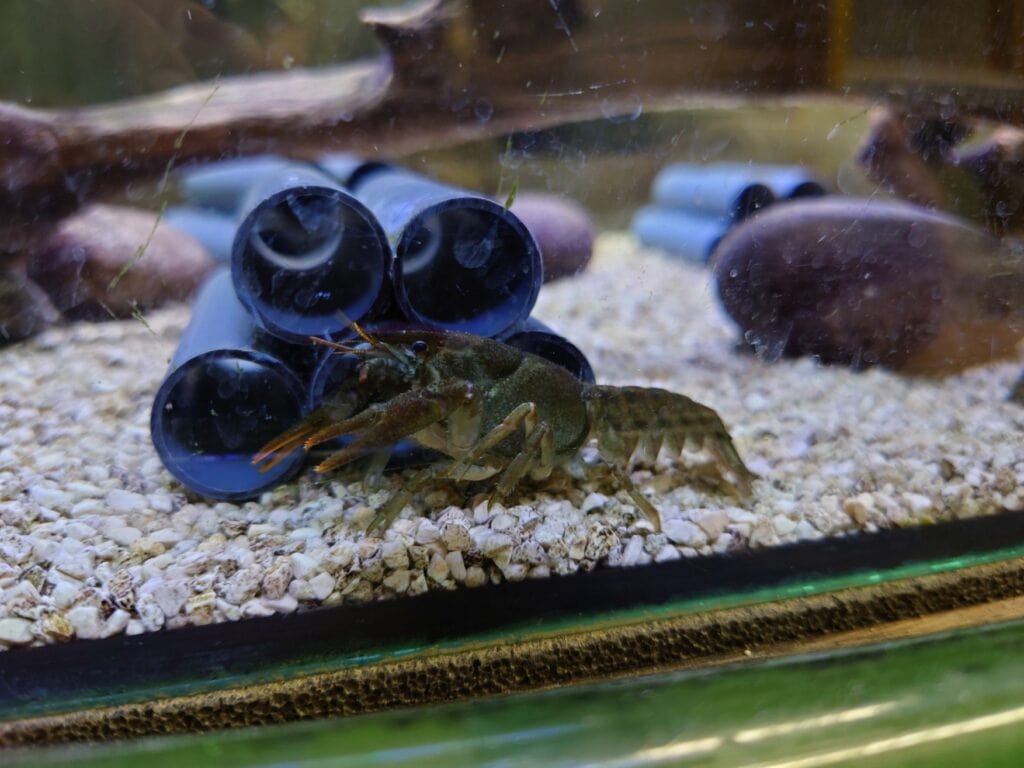
A white-clawed crayfish patiently waiting for dinner.
Obviously, all of our jobs get done in the incredibly warm temperatures of the reptile and invertebrate house, so our keepers make sure to take care of themselves by staying hydrated and having an even number of jobs in both warm and cooler areas of our section.
We often get asked “how do you cope in this heat?” The answer is that we simply just melt all day. But we do it for the animals that we love so it’s worth being gross, sticky, damp and hot.
